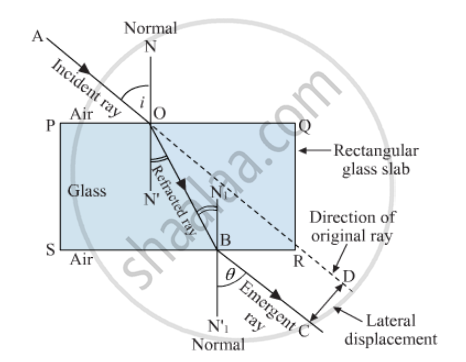Advertisements
Advertisements
Question
With the help of a diagram, show how when light falls obliquely on the side of a rectangular glass slab, the emergent ray is parallel to the incident ray.
Solution
In the following figure, a light ray travelling in air is incident on the rectangular glass slab. It gets refracted and bends towards the normal. Again, a change in the direction takes place when the refracted ray travelling in glass emerges into air. Here, the light ray bends away from the normal. We see that the incident and emergent rays are parallel to each other. These rays are parallel because the extent of bending on the opposite and parallel faces of slab is equal and opposite.

APPEARS IN
RELATED QUESTIONS
What is refraction of light?
A wall reflects light and a mirror also reflects light. What difference is three in the way they reflect light?
Explain how to read the following message which was found on some blotting paper:
Which phenomenon of light makes the water to appear shallower than it really is?
Why does a ray of light bend when it travels from one medium to another?
Light travels more quickly through water than through glass.
Which is optically denser : water or glass?
When a ray of light travels from air to glass, it bends .......... the normal.
The speed of light varies in different media.
Numerical problems.
The speed of light in water is 2.25 × 108 ms–1. If the speed of light in vacuum is 3 × 108 ms–1, calculate the refractive index of water.
How do twinkling stars occur? (or) what is the cause of the twinkling of stars?
